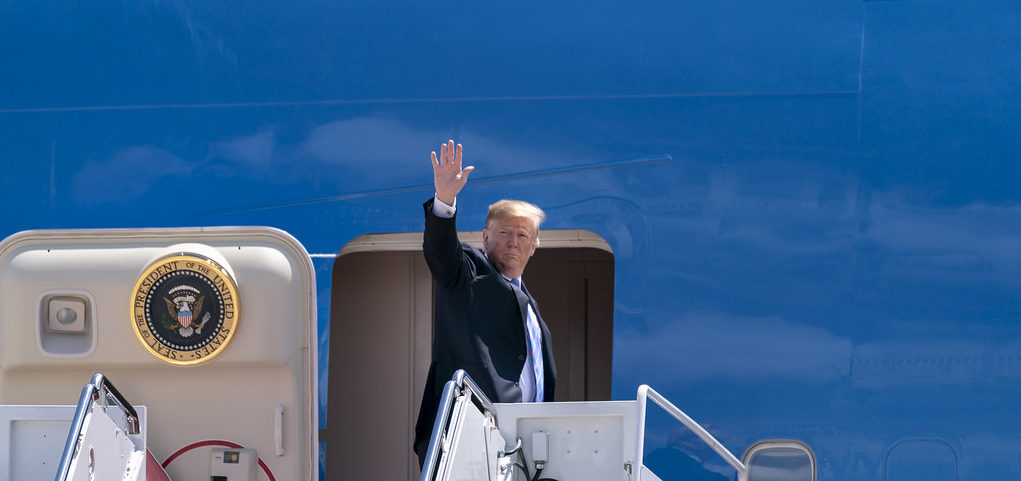President Trump’s 2019 financial disclosure: CREW’s analysis

Late last week, the White House released President Trump’s 2019 public financial disclosure (PFD). This document, which is required to be filed annually by covered executive branch officials, lists the president’s financial interests and sources of income, as well as any outstanding liabilities, gifts received, and various financial transactions that occurred within the previous calendar year.
As a result of President Trump’s refusal to divest from his business empire, his financial disclosure form is much longer and more complex than it might otherwise be: it lists more than two hundred assets, most of them limited liability corporations set up to manage Trump-branded businesses. Each of these businesses represents one or more potential conflict of interest for the president.
Due to the constraints of the PFD form, many details about President Trump’s finances remain unknown—details which might be revealed by the public release of the president’s tax returns. Still, this new disclosure sheds some light on how President Trump’s businesses fared in 2018. Here are CREW’s initial takeaways on what the president’s 2019 financial disclosure reveals.
Many of President Trump’s properties appear to have done worse last year compared to the year before.
Many of the president’s resorts and golf clubs in the United States earned him less income last year: Trump-owned golf courses in Philadelphia, Hudson Valley, Ferry Point, Colts Neck, Westchester, West Palm Beach, Jupiter, and Los Angeles all made less money, and revenues from the president’s Mar-a-Lago club decreased by about $2.5 million. Trump International Realty and the Trump Corporation, two companies that handle much of the Trump Organization’s realty and management business, both earned the president significantly less income in 2018 compared to the previous year. Although his financial disclosure form does not conclusively show whether total revenues at his properties increased or decreased, President Trump’s businesses generated a minimum of around $435 million in reported revenues last year, down from the previous year’s minimum of $452 million.
Some of the Trump properties that didn’t lose business, however, are those at which the president makes regular promotional appearances and which are frequented by his political supporters.
According to CREW’s tracking, the Trump National Golf Club in Bedminster, NJ was the Trump golf course that the president visited most last year; the Trump National Golf Club in Potomac Falls, VA came in second place. At both courses, revenues increased last year by more than $500,000.
Revenues from the Trump National Doral golf resort and the Trump International Hotel in Washington, DC—both top destinations for spending by the president’s political allies—increased by around $1.2 million and $400,000, respectively.
President Trump still makes money off of his international businesses—and in some cases, those businesses saw a jump in revenue.
Revenues increased last year at several international Trump properties, highlighting concerns about possible payments from foreign interests. The Trump Organization’s golf courses in Scotland and Ireland, for example, made around $3.4 million more last year than they did in 2017. The sale of a Trump-owned entity based in the Dominican Republic generated $3.2 million in revenues. And revenues generated by management fees at the Trump Organization’s Dubai golf property more than doubled last year compared to the year before. President Trump recently awarded the Dubai golf course’s designer, Tiger Woods, the Presidential Medal of Freedom.
The Trump Organization has not stopped exploring new business opportunities since the start of President Trump’s term.
Trump’s 2018 disclosure revealed that the Trump Organization had created a new business after Trump took office, and the president was earning income from it. That entity, T Retail LLC, generated around $520,000 of revenue in 2018, up from around $107,000 the previous year. This company manages an online store established in November 2017 that sells Trump-branded merchandise, including T-shirts, hats, and deodorant.
President Trump also acquired a new liability last year: a $5-25 million mortgage related to a house in Palm Beach that the Trump Organization is now attempting to rent.
President Trump continues to earn income from real estate sales—many of which are made to secret or undisclosed buyers.
The Trump Organization earned more than $20 million in real estate sale revenues last year, according to the President’s financial disclosure statement. As previous reporting has noted, in recent years, most of these sales from the Trump Organization have been made to shell companies that obscure the buyers’ true identities, making it difficult to know where these payments are ultimately coming from.
In the end, President Trump’s financial disclosure raises more questions than it answers. Much crucial information about the president’s finances, such as the specific value of his assets and how much he has paid in taxes, is not listed in this document. Some of these missing details could, however, be found on President Trump’s tax returns. As a result, although it has shed some light on President Trump’s finances, the release of this financial disclosure only further underscores the urgent need for the the president’s tax returns to be made public.